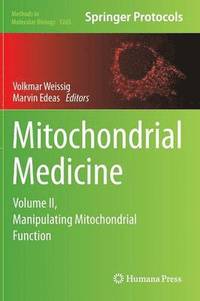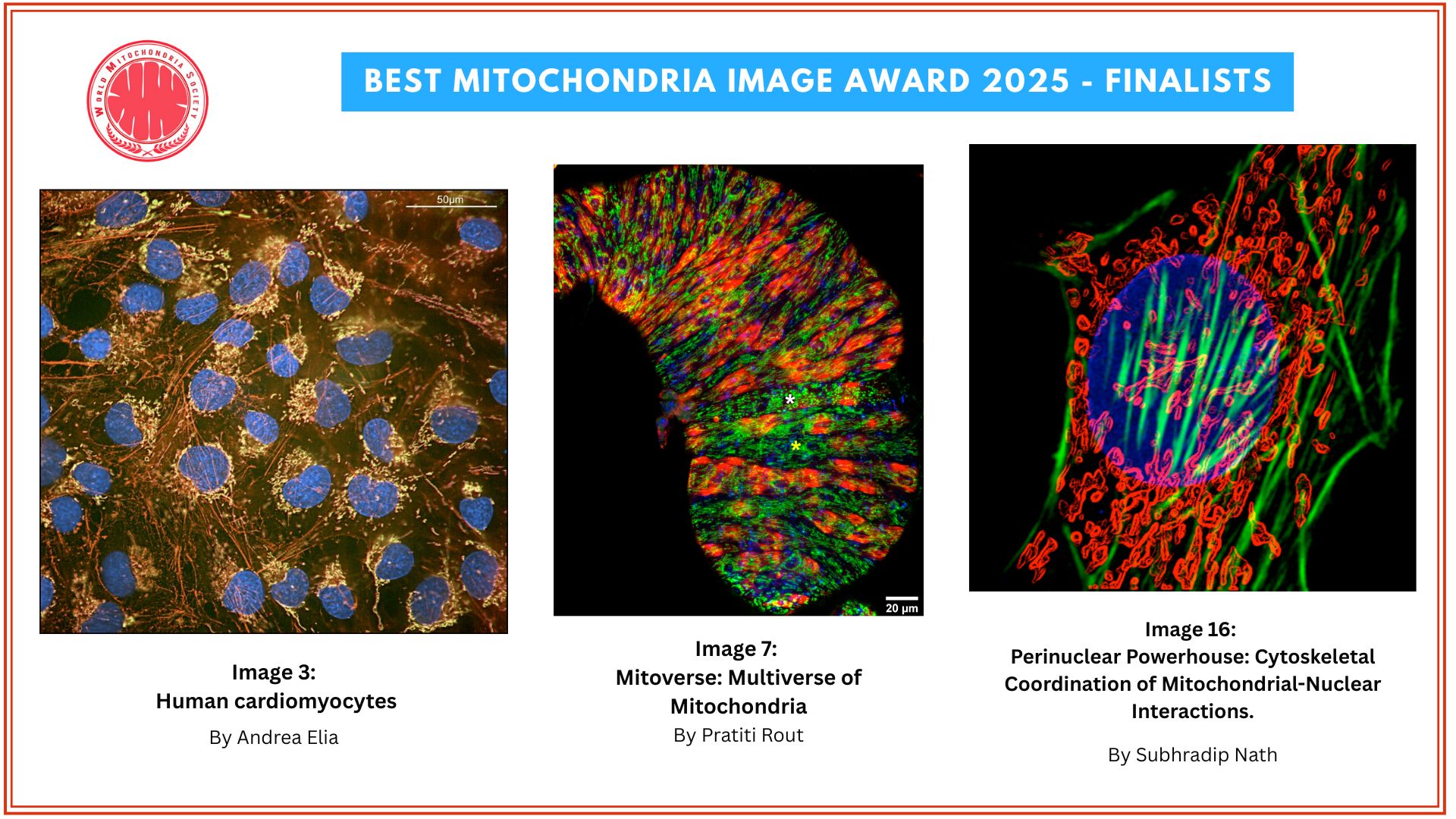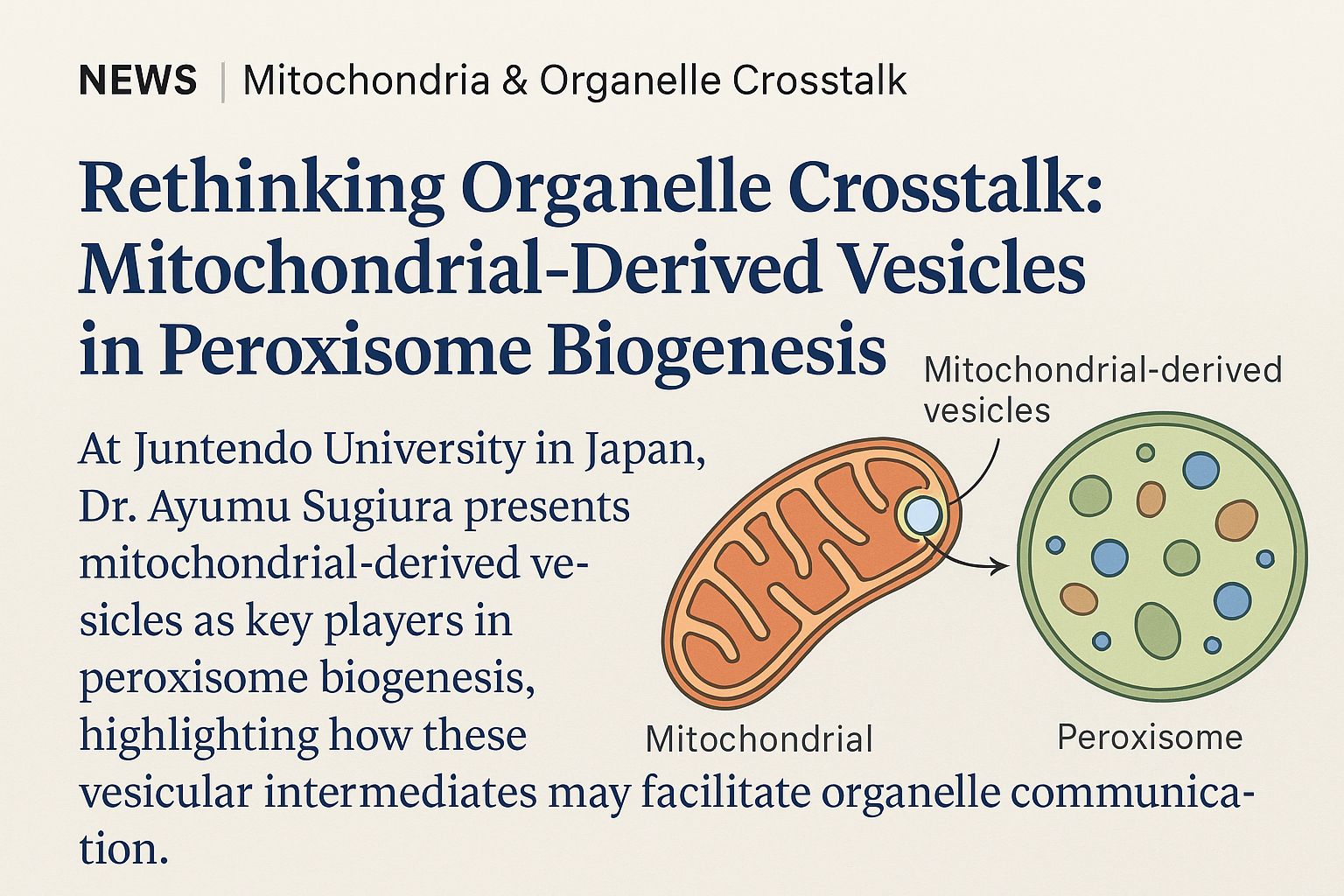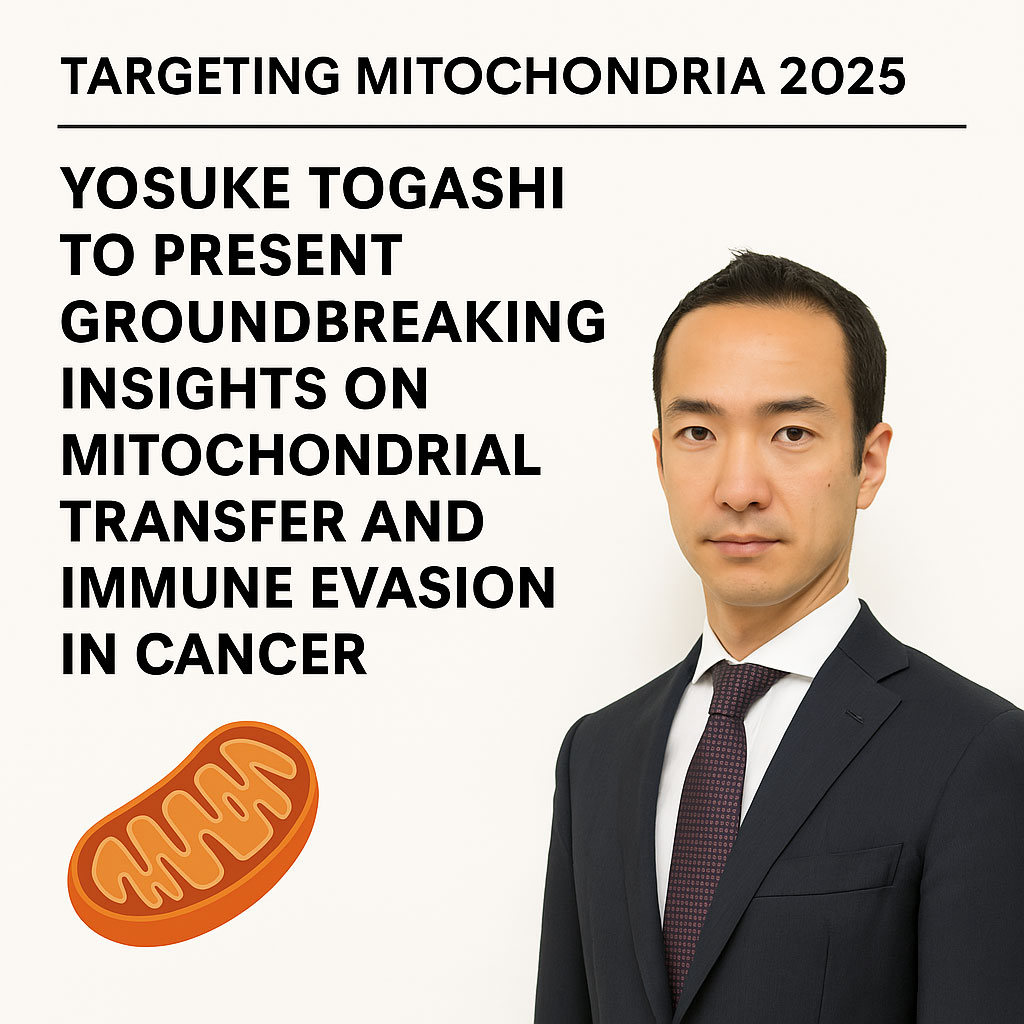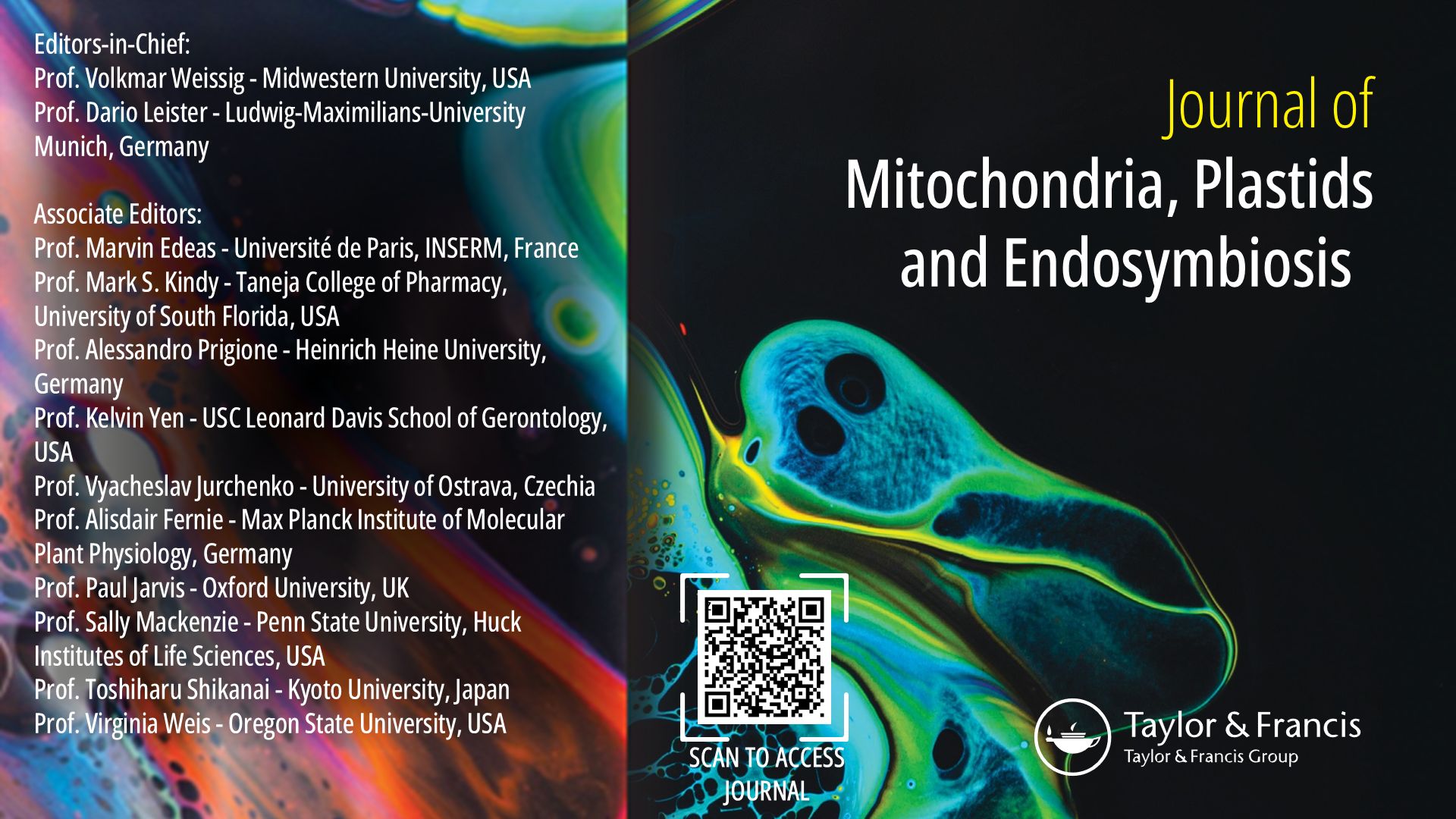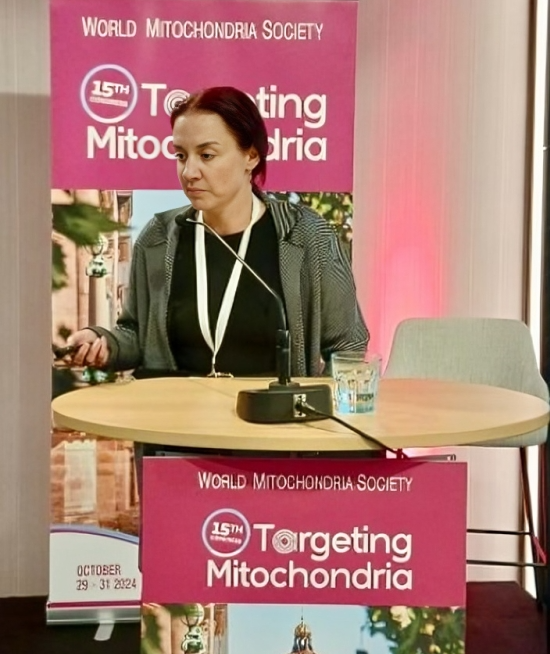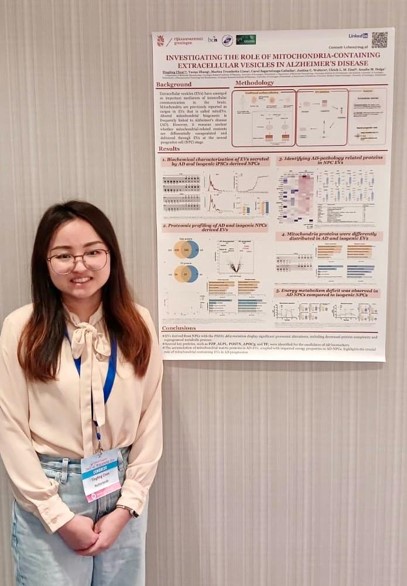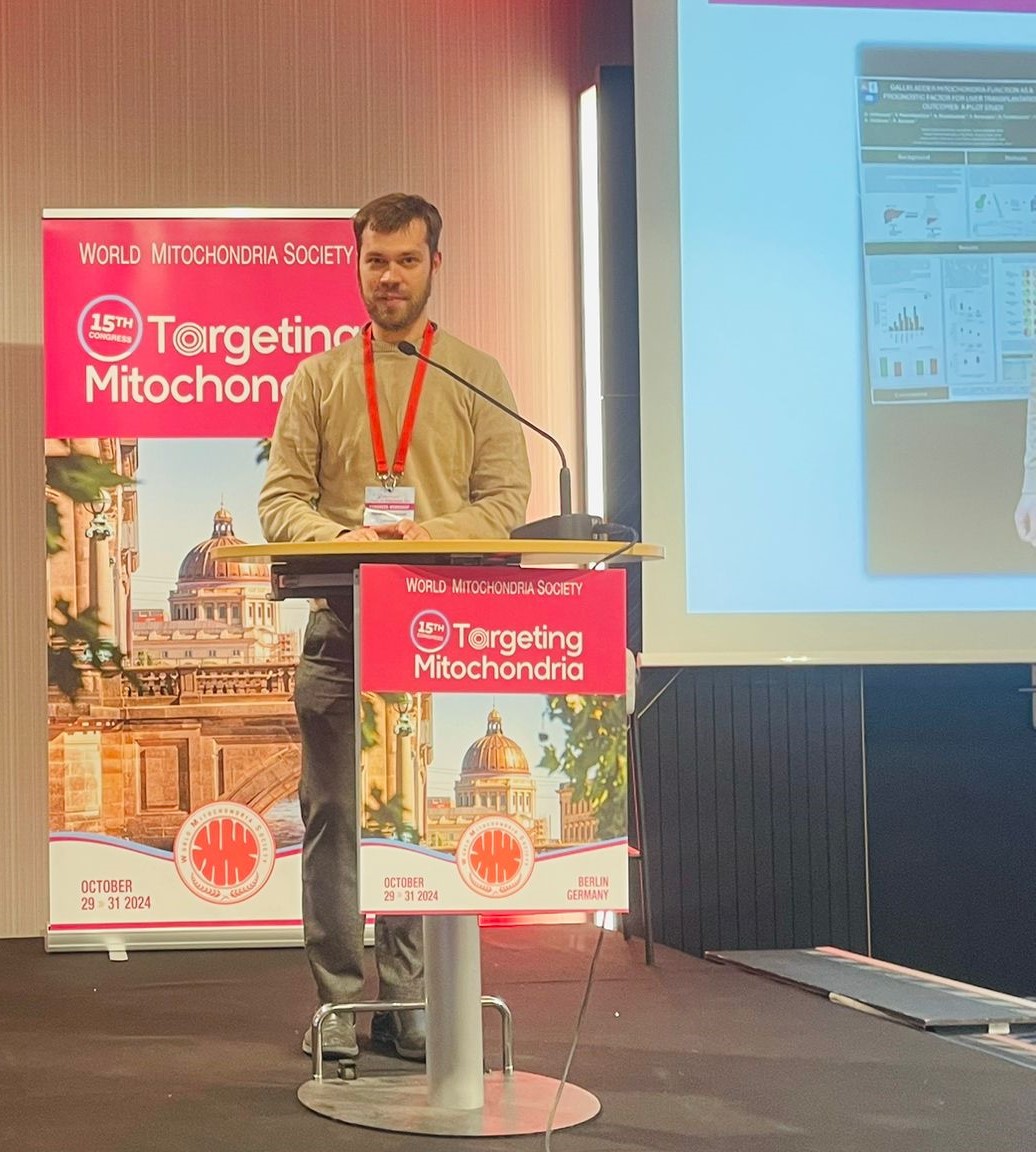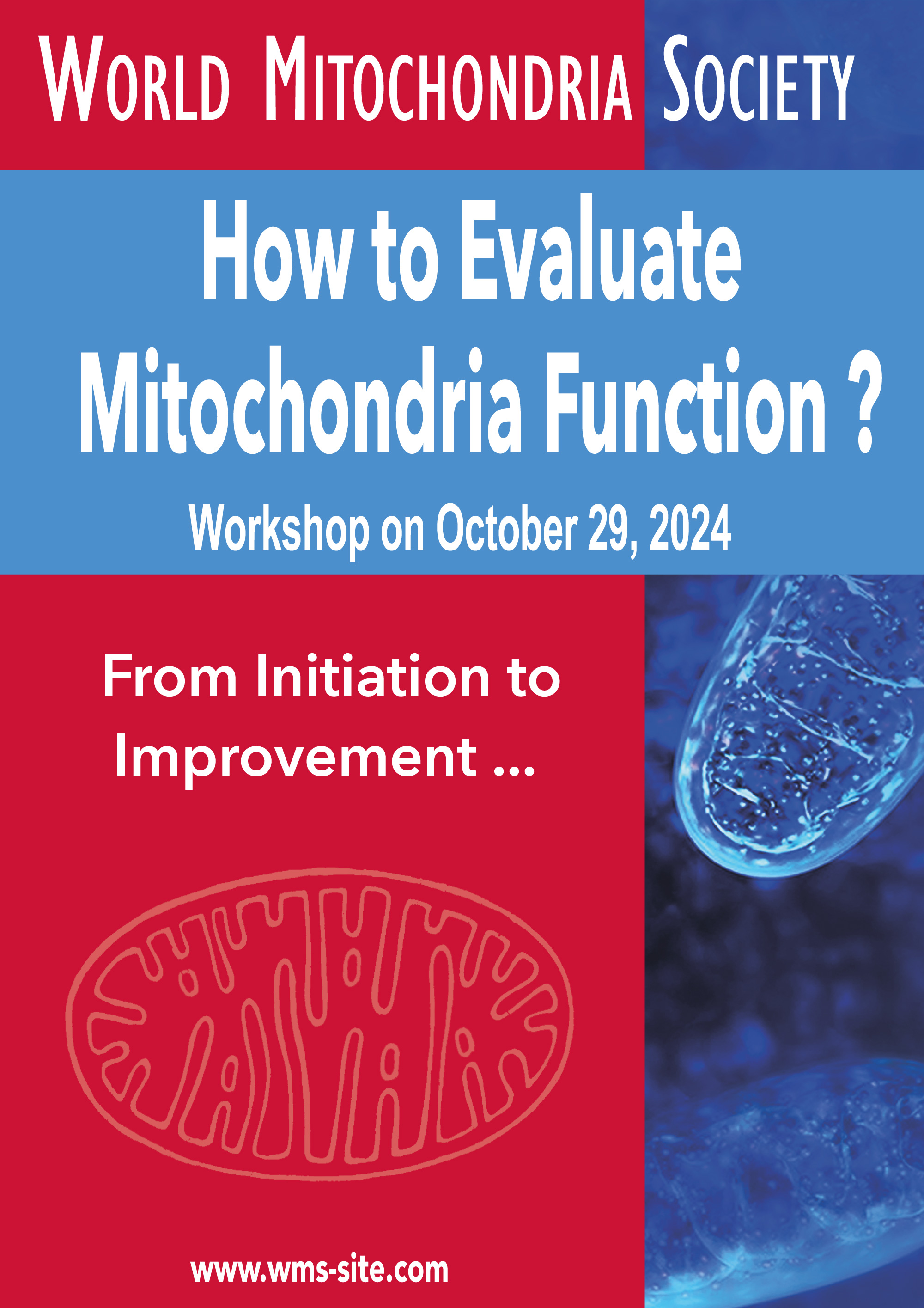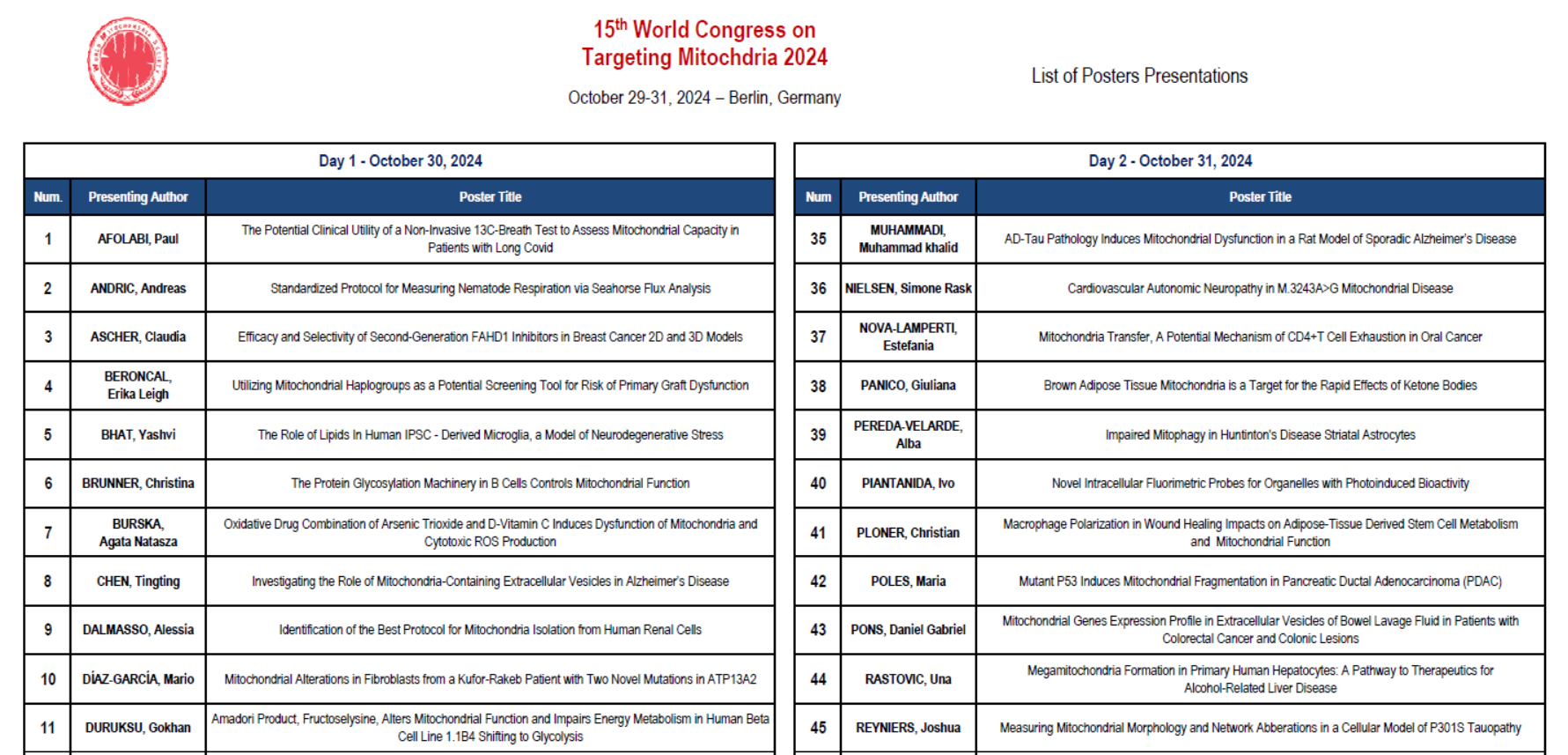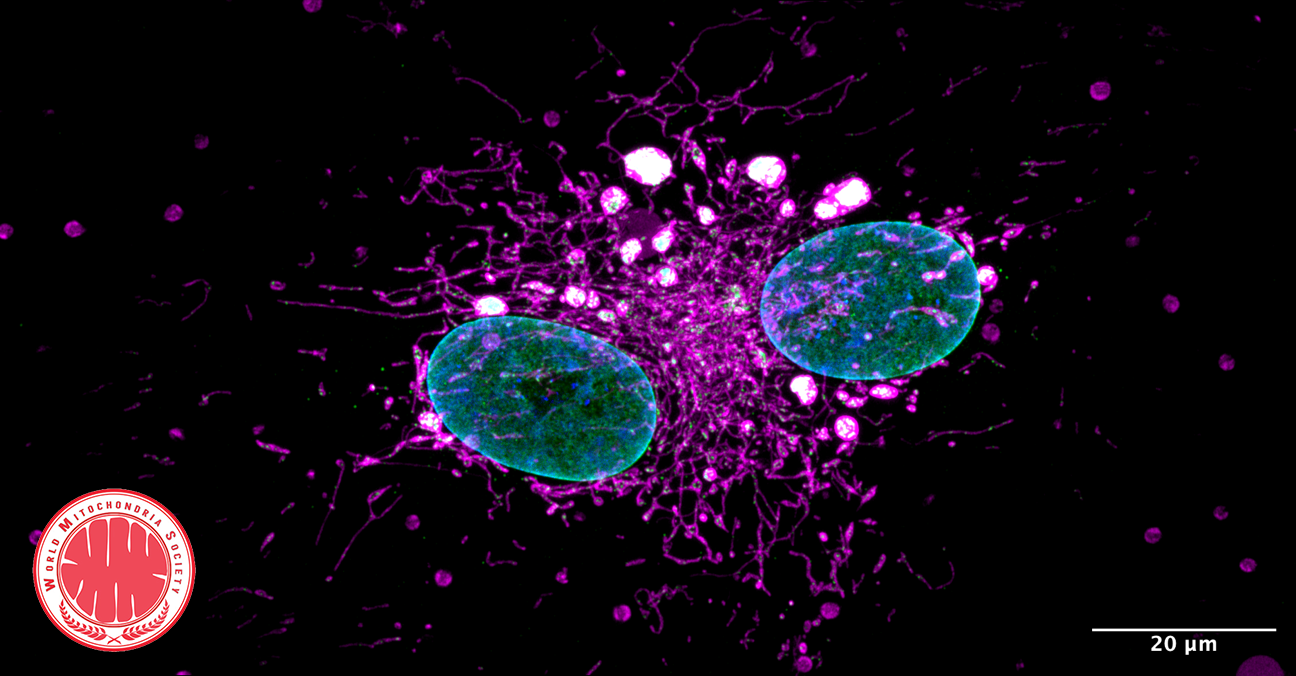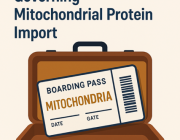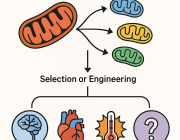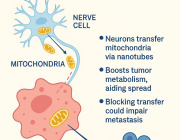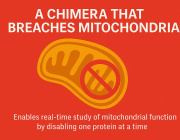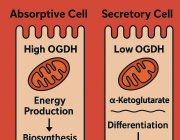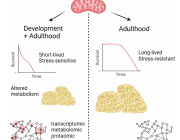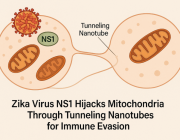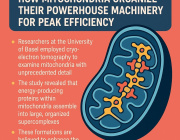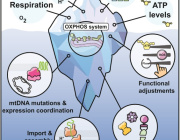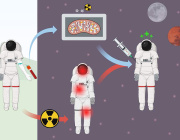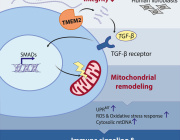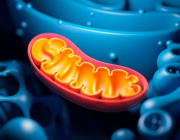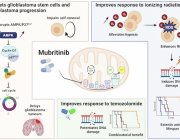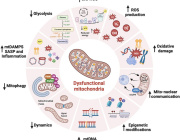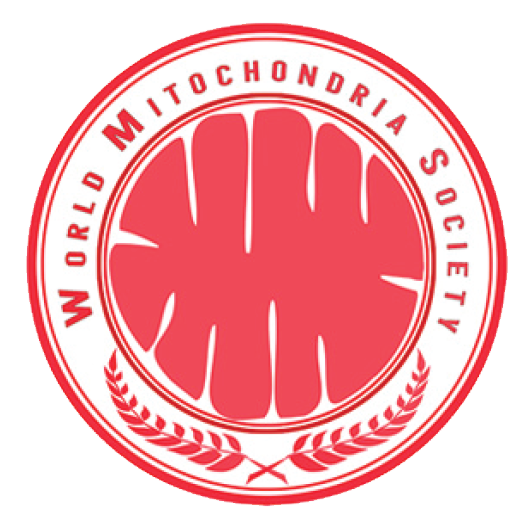Researchers from the University of Freiburg are mapping the distribution of all proteins in mitochondria for the first time
Mitochondria consist of four subcompartments: one outer and one inner membrane, which are each surrounded by watery compartments, the intermembrane space, and the so-called matrix, which is the innermost reaction chamber of mitochondria. Each of these subcompartments has its own protein equipment to carry out specific functions. In addition to providing energy, mitochondria do other important metabolic tasks that involve proteins, like controlling the programmed death of cells. There are roughly 1,500 different species of these proteins in humans, while baker's yeast, which the scientists used as a model, has 1,000. Until now, researchers were unable to attribute many of these proteins to one of the four subcompartments. This is important in order to understand the exact mechanism of many metabolic pathways as well as new functions of previously unknown proteins.
Using isolated mitochondria from baker's yeast, the groups of researchers were able to apply various fractionation methods to meticulously isolate the proteins in each compartment and hence successfully map virtually the entire protein landscape of mitochondria. In their research, the scientists from the University of Freiburg were also able to discover more than 200 additional proteins that had previously not been attributed to mitochondria. Their published study could thus serve the international research community as a basis for studying the potential new functions of mitochondria and for better understanding not only the central biochemical processes in cells, but also the development of many diseases.
Chris Meisinger is a professor at the Institute of Biochemistry and Molecular Biology at the University of Freiburg and is a member of the University of Freiburg's excellence cluster BIOSS Centre for Biological Signalling Studies. Nora Vögtle is the head of an independent junior research group funded under the Emmy Noether program of the German Research Council (DFG) at the Institute of Biochemistry and Molecular Biology.
The net-like structure of green colored mitochondria from the baker's yeast model organism. Source: AG Meisinger
Original Publication:
Vögtle, F.N., Burkhart, J.M., Gonczarowska-Jorge, H., Kücükköse, C., Taskin, A.A., Kopczynski, D., Ahrends, R., Mossmann, D., Sickmann, A., Zahedi, R.P. and Meisinger, C. (2017). Landscape of submitochondrial protein distribution. Nature Communications.
News selected from a press release from the University of Freiburg, available here.
Altered Mitochondria Associated with Increased Autism Risk
Mitochondria, the tiny structures inside our cells that generate energy, may play a key role in autism spectrum disorders (ASD). A provocative new study by Children’s Hospital of Philadelphia (CHOP)’s pioneering mitochondrial medicine team suggests that variations in mitochondrial DNA (mtDNA) originating during ancient human migrations may play an important role in predisposition to ASDs.
“Our findings show that differences in mitochondrial function are important in ASD,” said study leader Douglas C. Wallace, PhD, director of the Center for Mitochondrial and Epigenomic Medicine at CHOP. “Our team demonstrates that a person’s vulnerability to ASD varies according to their ancient mitochondrial lineage.”
Wallace and colleagues, including Dimitra Chalkia, Larry Singh and others, published their findings today in JAMA Psychiatry.
The scientists conducted a cohort study of genetic data from 1,624 patients and 2,417 healthy parents and siblings, representing 933 families in the Autism Genetic Resource Exchange (AGRE). The Center for Applied Genomics at CHOP had previously performed genome-wide association studies on this AGRE cohort, and partnered in this study.
Mitochondria contain their own DNA, distinct from the more familiar nuclear DNA (nDNA) inside the cell nucleus. The mtDNA codes for essential genes governing cellular energy production, and those genes exchange biological signals with nDNA to affect our physiology and overall health.
The current study analyzed single-nucleotide functional variants--base changes in the cohort’s mtDNA that characterize mitochondrial haplogroups. Haplogroups are lineages of associated mtDNA variants that reflect the ancient migration patterns of early human bands that spread out of Africa to the rest of the world during prehistory. Based on his seminal 1980 discovery that the human mtDNA is inherited only through the mother, Wallace’s surveys over the years, covering mtDNA variation among indigenous populations around the world, have permitted the reconstruction of human worldwide migrations and evolution patterns over hundreds of millennia.
The current study found that individuals with European haplogroups designated I, J, K, X, T and U (representing 55 percent of the total European population) had significantly higher risks of ASD compared to the most common European haplogroup, HHV. Asian and Native American haplogroups A and M also were at increased risk of ASD.
These mitochondrial haplogroups originated in different global geographic areas, adapted through evolution to specific regional environments. However, subsequent changes, such as migration, changes in diet, and other environmental influences, can create a mismatch between the physiology of a particular mtDNA lineage and the individual’s environment, resulting in predisposition to disease. Additional nDNA genetic factors or environmental insults may further reduce an individual’s energy output until it is insufficient to sustain normal brain development and function, resulting in disease.
As the wiring diagram for cellular power plants, mtDNA is crucial in supplying energy to the body. The brain is particularly vulnerable to even mild energy deficiencies because of its high mitochondrial energy demand. Wallace’s previous studies have shown that mitochondrial dysfunction can disturb the delicate balance between inhibition and excitation in brain activity—a crucial factor in ASDs and other neuropsychiatric disorders. “There may be a bioenergetic threshold,” says Wallace, adding that an individual already predisposed to ASD based on their mitochondrial haplogroup may be pushed below that threshold by the chance occurrence of additional genetic variants or environmental insults.
The striking tendency for ASD to occur more frequently in males than females may reflect another peculiarity of mitochondrial genetics, added Wallace. Males are four times more likely to suffer blindness from a well-known mtDNA disease, Leber hereditary optic neuropathy (LHON). The lower risk of blindness in females may arise from estrogen effects in mitochondria that increase beneficial antioxidant activity.
Wallace said that his team’s finding that subtle changes in mitochondrial energetics are important risk factors in ASD suggests potential alternative approaches for therapy. He added, “There is increasing interest in developing metabolic treatments for known mtDNA diseases such as LHON. If ASD has a similar etiology, then these same therapeutic approaches may prove beneficial for ASD.”
The National Institutes of Health (grants MH108592, NS021328, and NS070298) and the Simons Foundation supported this study. In addition to his CHOP position, Wallace is on the faculty of the Perelman School of Medicine at the University of Pennsylvania.
News selected from a press release from Newswise, available here.
Mitochondrial Troublemakers Unmasked in Lupus

New findings expose how mitochondria might instigate lupus-like inflammation.
Mitochondria are the power stations in living cells, but they also have many other sidelines. The byproducts of their respiration and energy conversion, for instance, include molecules eager to participate in chemical changes. These reactive oxygen species are two-edged swords that can harm the body or protect it.
For reasons yet unknown, certain white blood cells in lupus and in other chronic inflammatory diseases produce elevated amounts of mitochondrial reactive oxygen species.
Researchers at the University of Washington and the National Institutes of Health are discovering more about how these chemicals and other mitochondrial materials provoke the body's self-attack in systemic lupus erythematosus.
"Because mitochondria are a potent source of reactive oxygen species, and because mitochondrial DNA has been implicated recently in inflammatory responses," the researchers noted, "we wanted to examine their role in this autoimmune disorder."
Lupus is more common in young women and varies in its constellation of symptoms from patient to patient. Its severity ranges from mild to disabling. In some patients, lupus is life-threatening. Currently no treatment exists to cure it. Periodic flares can affect one or more parts of the body. During a flare, a burning rash, which early doctors thought resembled the scratch of a wolf's paw, often reddens the cheeks. The joints, kidneys, and the sack surrounding the heart can become swollen and painful. If the brain is under autoimmune siege, headaches, seizures or episodes of psychosis can occur.
Neutrophils - the white blood cells that normally capture pathogens - are among the suspects in autoimmune disorders. Germs, as well as damaged cells and immune particles the body manufactures, can goad a neutrophil to create a mesh outside itself in an attempt to ensnare offenders.
Past studies suggest that these traps also could promote the organ damage of lupus. The formation of neutrophil extracellular traps, or NETs, can lead to a type of cell death called NETosis. Either aberrant NETosis or impaired NET clearance likely plays a role in several autoimmune disorders, including lupus. In mouse studies, drugs that inhibit NETosis result in improvements in lupus. These drugs also reduce hardening of the arteries and abnormal clotting.
How these traps are generated, however, and how they provoke inflammation when no infection is present, are both unclear.
These questions, and the contribution of these phenomena to lupus-like disease, are being explored by a research team jointly led by Keith B. Elkon, UW professor of rheumatology, and Mariana J. Kaplan, chief of the Systemic Autoimmunity Branch of the National Institute of Arthritis and Musculoskeletal and Skin Diseases.
Their most recent results appear this week in Nature Medicine.
They report that the RNA-protein immune complexes commonly found in lupus patients induce cell death by NETosis in a process dependent on mitochondrial reactive oxygen species.
Usually the cell has mechanisms that prevent oxidative DNA damage. In the case of immune complex stimulated NETosis, the cell's survival mode is disrupted. The nuclear membrane disintegrates, leaving genomic DNA exposed to reactive oxygen species. Mitochondrial DNA is more vulnerable than genomic DNA to oxidant damage, the researchers explained.
After the immune complexes spur the neutrophils, the cells' mitochondria rise to the cell surface. They spew oxidized mitochondrial DNA into their environment through the neutrophil extracellular trap.
In lab studies, the researchers noted, this extracellular release of oxygenated mitochondrial DNA promotes an inflammatory reaction. When this DNA is injected into mice, its unwelcome presence is detected by DNA sensors and leads to activation of a protein called STING. A chemical warning goes off. The resulting type 1 interferon signaling calls up antimicrobial defenses and other immune responses.
In a related study on a mouse model of lupus, the researchers treated the mice with scavengers that clean up the overflow of mitochondrial reactive oxygen species. They found this could reduce type I interferon responses, as well as the severity of the lupus.
This finding is clinically relevant to autoimmune diseases, according to the research report, because various reactive oxygen species inhibitors are currently being tested in clinical settings for other diseases. They could be studied as potential therapeutic agents for systemic autoimmunity.
In the clinical part of the research project, a distinct class of neutrophils - low-density granulocytes - were obtained in blood samples from individuals with systematic lupus erythematosus and people with chronic granulomatous disease. The researchers noted that mitochondrial reactive oxygen species played a necessary role in the spontaneous NETosis cell death of low-density granulocytes. Furthermore, the released NETs contained large amounts of oxidized mitochondrial DNA.
The authors noted, "Together these findings highlight a role for mitochondria in the generation of neutrophil extracellular traps, and also in the generation of pro-inflammatory oxidized mitochondrial DNA in autoimmune diseases."
The results, in summary, offer evidence that neutrophil extracellular traps enriched with mitochondrial DNA could help drive lupus-like diseases and could lead to novel therapeutic approaches.
Source: University of Washington
This topic, among others, will be discussed at the 7th World Congress on Targeting Mitochondria that will be organized from October 24 to October 26, 2016 at Hotel Maritim pro-Arte, in Berlin.
Breakthrough in understanding mitochondria
Scientists have made a breakthrough in understanding how mitochondria – the “powerhouses” of human cells – are made.
Mitochondria, which exist within human cells but have their own DNA, need many different proteins to function – but the process of how they get these has never been imaged in detail.
Now a study led by Dr Vicki Gold, of the University of Exeter, has shown that some ribosomes – the tiny factories of cells which produce proteins – are attached to mitochondria. This can explain how proteins are pushed into mitochondria whilst they are being made.
The findings open new avenues for studying protein targeting and mitochondrial dysfunction, which has been implicated in diseases including cancer and neurodegenerative disorders such as Parkinson’s.
“Proteins are responsible for nearly all cellular processes. The cell has to make a huge variety of proteins and target them to the precise location where they are needed to function,” said Dr Gold, of Exeter’s Living Systems Institute.
“In the case of mitochondria, proteins have to cross the boundary of two membranes to get inside them.
“We looked for – and were able to image at unprecedented detail – ribosomes attached to mitochondria.”
The images were taken using cutting-edge technology called cryo-electron microscopy.
Dr Gold and her colleague Dr Bertram Daum have both come from Germany to set up a cryo-electron microscopy facility at the University of Exeter.
Having made the latest discovery by studying healthy cells, Dr Gold now plans to see how the process works in unhealthy cells.
“Mitochondria are the energy factories of the cell, so when they don’t function properly it can lead to a huge range of health problems,” she said.
“In many cases these are age-related disorders like Parkinson’s disease.
“Our findings may help us understand these conditions better, which is an important step towards better treatments.”
Dr Gold, who began the research while at the Max Planck Institute of Biophysics in Frankfurt, Germany, worked with co-authors Piotr Chroscicki, Piotr Bragoszewski and Agnieszka Chacinska – all of the International Institute of Molecular and Cell Biology in Warsaw, Poland.
We selected this news from the press release from the University of Exeter, available here.
Treating cancer like an infectious disease: A strategy presented by Dr Rebecca Lamb during WMS Congress 2016

During the 6th World Congress on Targeting Mitochondria scheduled from October 28 to 30 in Berlin, Dr Rebecca Lamb from the University of Manchester, UK will give a strategic presentation about Antibiotics that target mitochondria effectively eradicate cancer stem cells, across multiple tumor types: Treating cancer like an infectious disease.
Dr Lamb and her team proposes a new strategy for the treatment of cancer, via the selective targeting of cancer stem cells (CSCs) responsible for tumour-initiation, progression, treatment resistance and disease recurrence. They utilized CSC activity as a global phenotypic characteristic of multiple tumour types, to provide a mutation-independent approach to cancer therapy, effectively treating cancer as a single disease of “stemness”.
If you would like to know more about the presentation from Dr Lamb, don't hesitate to register for Targeting Mitochondria World Congress.
More information on www.targeting-mitochondria.com






